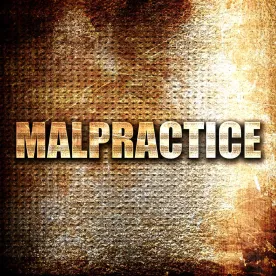Medical errors are among the leading causes of injury and death in Pennsylvania and across the United States. While most doctors are skilled professionals who do their best to take in all the available information before taking any action that could affect a patient’s health, doctors are human and will make mistakes. When these mistakes are the result of a doctor’s negligence, it is called medical malpractice.
Following a medical error, you may be wondering where to turn for help. While medical mistakes are common, every error is unique, and the laws governing these claims are complex.
Steps to Take After a Pennsylvania Medical Error
After a patient learns that they may have fallen victim to a healthcare provider’s negligence, the first place to start is by calling the doctor responsible for the mistake and discussing it with them. Talk with the doctor to see if whatever harm caused by the medical error can be reversed, or at least minimized. A doctor’s duty to their patient does not end once a procedure is over, and if a doctor is notified of an error, they have a legal obligation to do whatever they can to help the patient.
Of course, speaking with the doctor will not always result in a satisfactory resolution. Regardless, this is an important step, not only to protect a patient’s health but also to make sure a patient mitigates their damages.
If a patient cannot reach an acceptable resolution with their healthcare provider, they can escalate the situation by reporting the doctor to the state’s medical licensing board. Doing so may result in the issuance of a warning or the healthcare professional being subject to disciplinary proceedings. However, this is not the same thing as filing a Pennsylvania medical malpractice lawsuit.
Patients who have been the victim of an act of medical negligence can also pursue a Pennsylvania medical malpractice lawsuit against the negligent healthcare provider and potentially other related parties.
Establishing Liability in a Pennsylvania Medical Malpractice Case
Medical malpractice claims are among the most complicated personal injury cases. The laws that control these cases are not always straightforward, and anyone considering bringing a claim should reach out to a dedicated attorney. However, as a starting point, to prove a medical malpractice claim, a patient must establish the following four elements:
There must be a doctor-patient relationship.
In most medical malpractice cases, this will not be an issue because the patient hired the doctor to treat them, and the doctor agreed to treat the patient. However, in some instances where a physician did not directly treat the patient, proving this element can raise an issue.
The healthcare provided was negligent.
Perhaps the most contested element of a medical malpractice case is the question of whether the defendant healthcare provider breached a duty of care owed to the patient. Medical malpractice cases involve complex scientific and medical issues beyond the understanding of most jurors. Thus, state lawmakers have determined that plaintiffs in all medical malpractice cases must present an expert witness’s testimony. Undoubtedly, the defense will also have an expert, creating a “battle of the experts.” Thus, the credentials and credibility of an expert are paramount to a claim’s success.
The patient’s injuries were a result of the doctor’s negligence.
Sometimes, a healthcare provider will argue that a patient’s injuries were pre-existing or were caused by some other event, and not the doctor’s negligence. To successfully recover in a Pennsylvania medical negligence case, a plaintiff must prove that the doctor’s negligence was the cause of their injuries. In legal terminology, this is referred to as causation.
The patient must prove they suffered legally recognizable damages.
Before a patient can collect financial compensation from a negligent healthcare provider, they must prove that they suffered damages. In most Pennsylvania medical negligence cases, this is not a major issue, because almost any injury can qualify for damages. For example, physical pain, emotional suffering, medical bills, missed work and reduced earning capacity are valid types of damages. Unlike many other states, Pennsylvania does not currently have a cap on the amount of damages that a plaintiff can recover.
Additional Requirements in a Pennsylvania Medical Malpractice Lawsuit
Due to the complex nature of medical negligence claims and the frequency with which these claims are brought, state lawmakers have implemented several hurdles that patients must overcome to have their case heard. First, a medical malpractice claim must be filed within two years from the date that the patient knew or should have known of their injury.
This means that if a patient does not learn that they were the victim of an error until three years after a surgery, they have two years from the date they first discovered the error. However, Pennsylvania law also states that no medical malpractice claim can be filed more than seven years after the allegedly negligent act. The only exception to this is regarding cases involving a foreign object that was left in a patient’s body.
Additionally, Pennsylvania medical malpractice plaintiffs must file a certificate of merit. A certificate of merit is a signed document stating that a doctor in the same field as the defendant has reviewed the plaintiff’s case and agrees that it has merit. The certificate of merit must be filed within 60 days of when the plaintiff filed their complaint.




 />i
/>i

